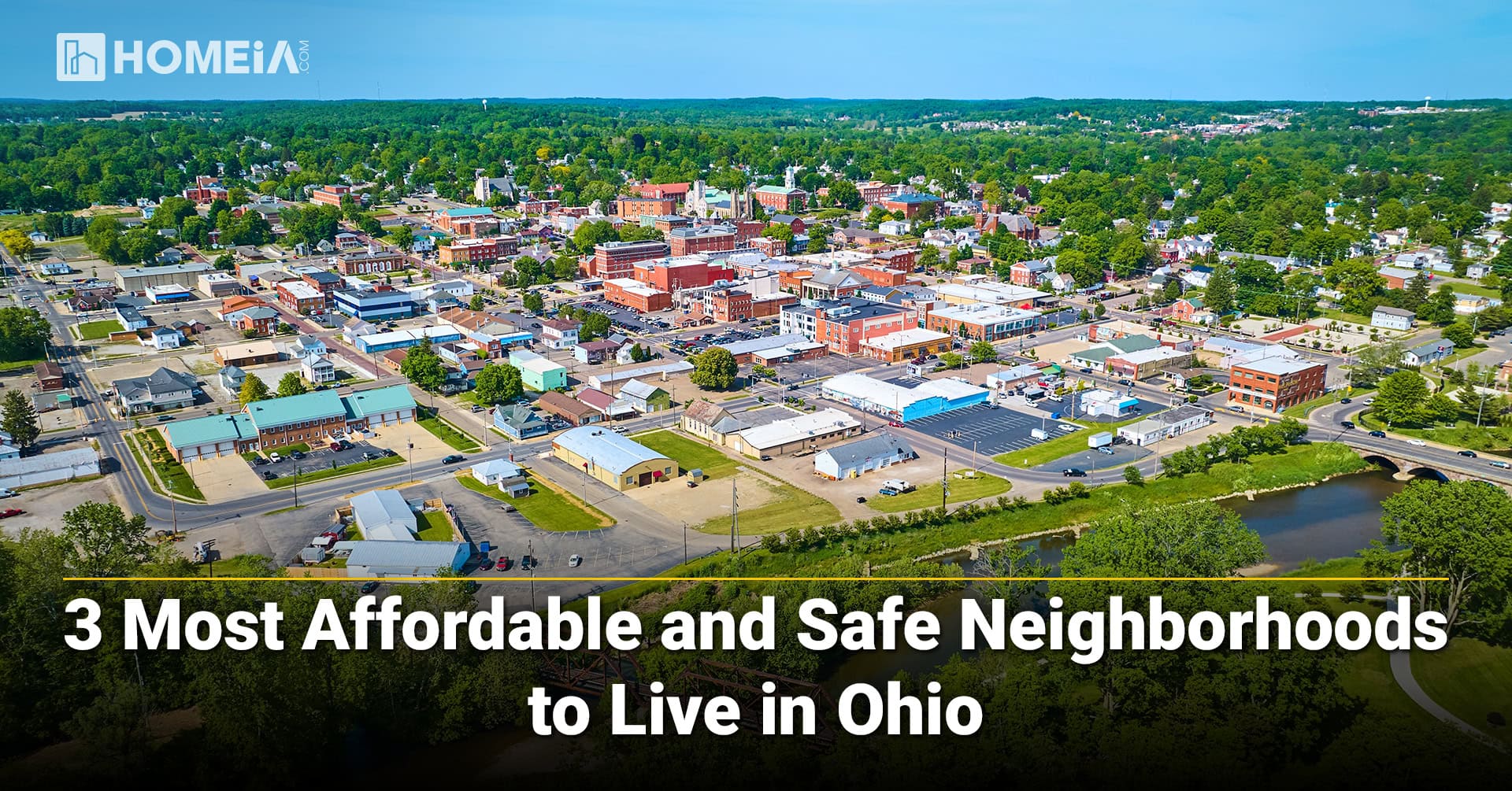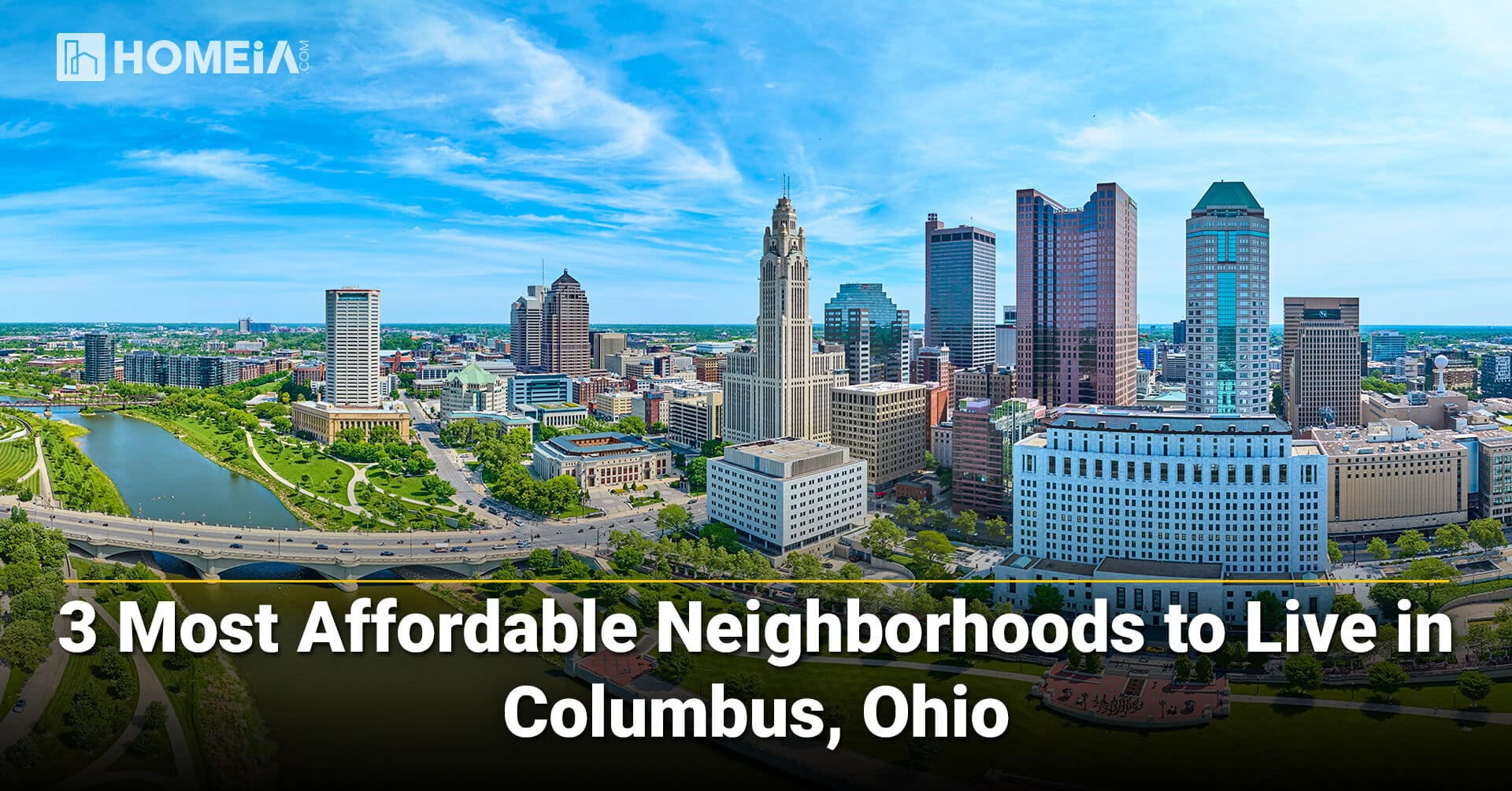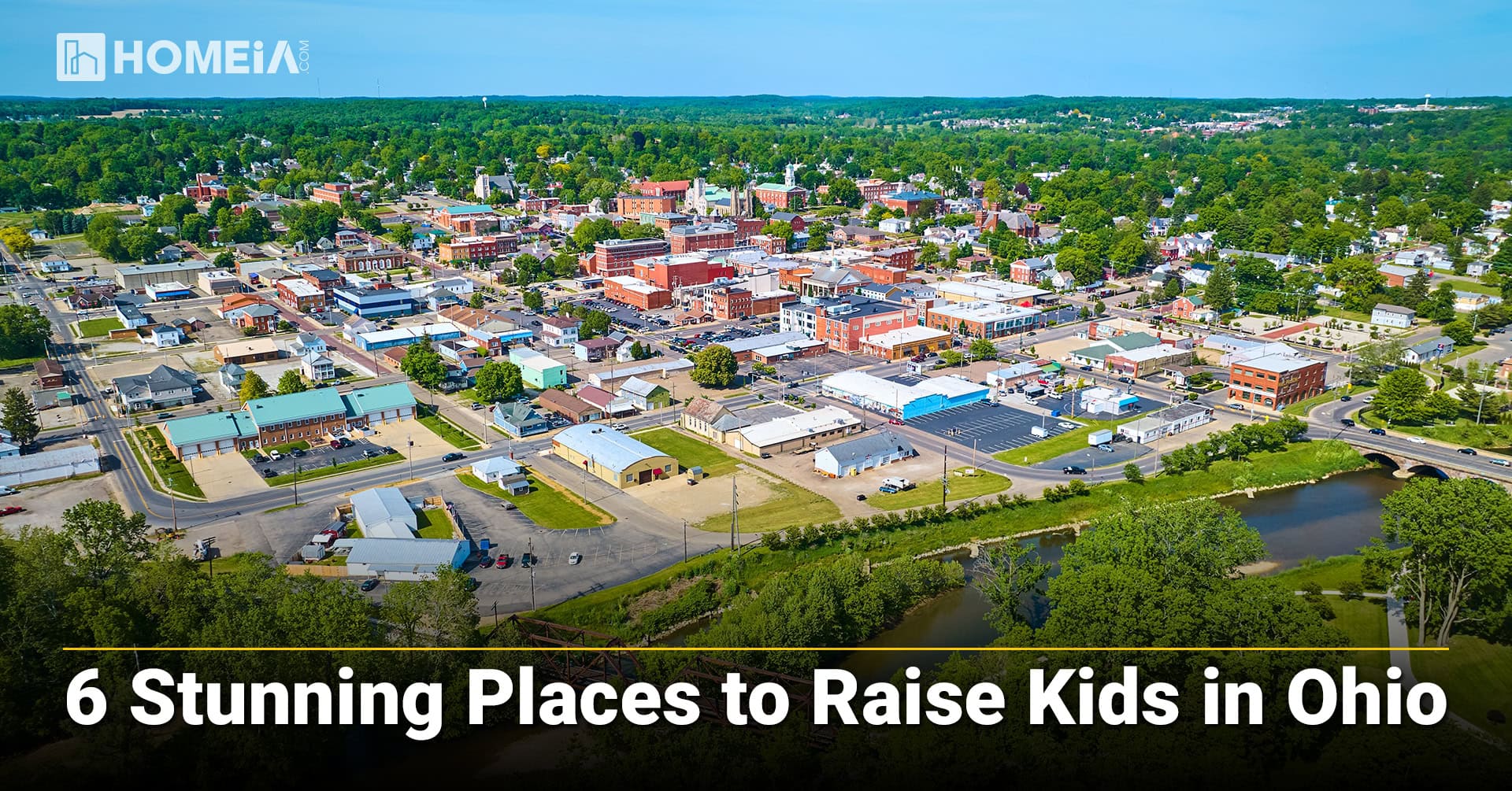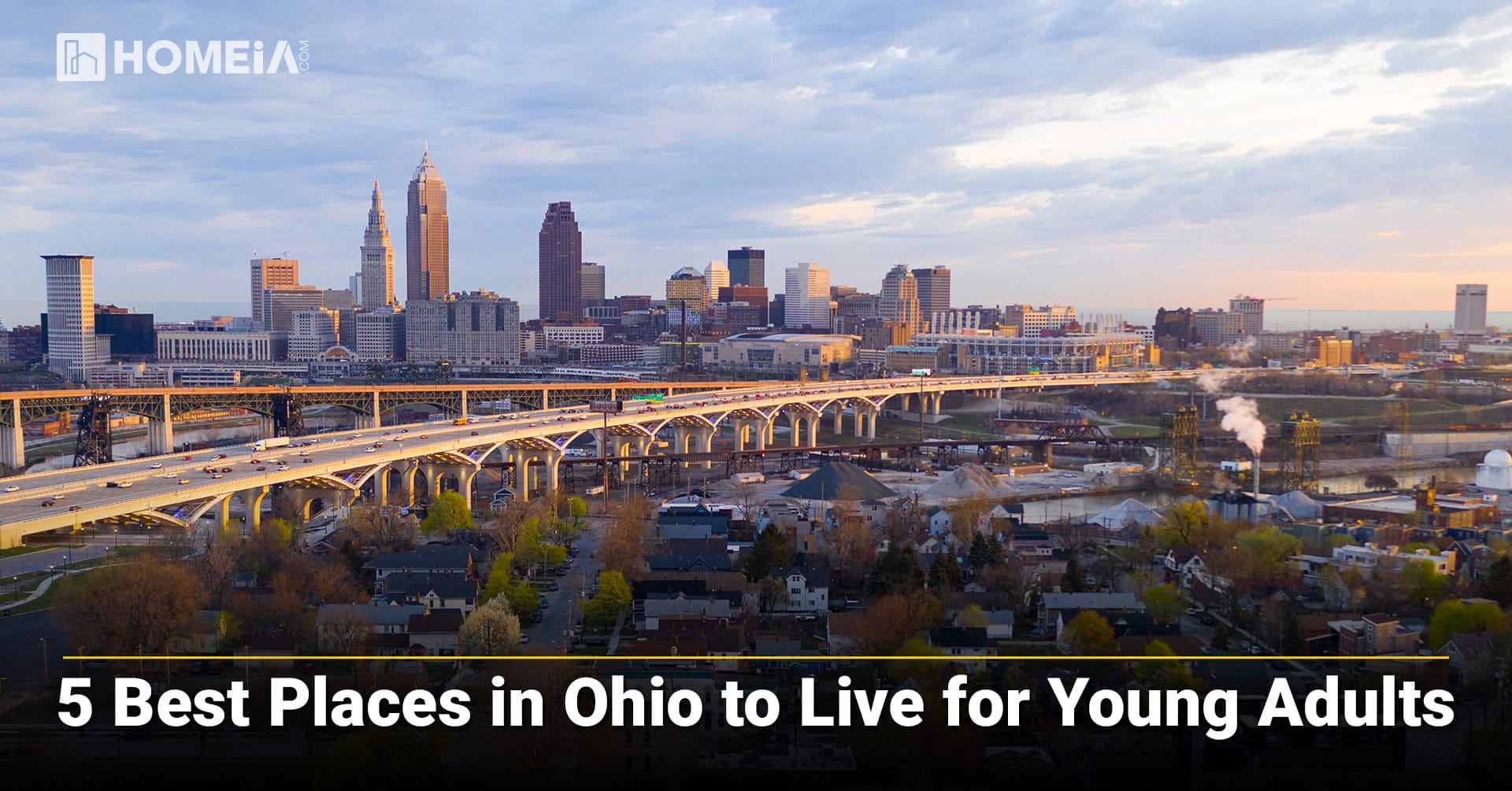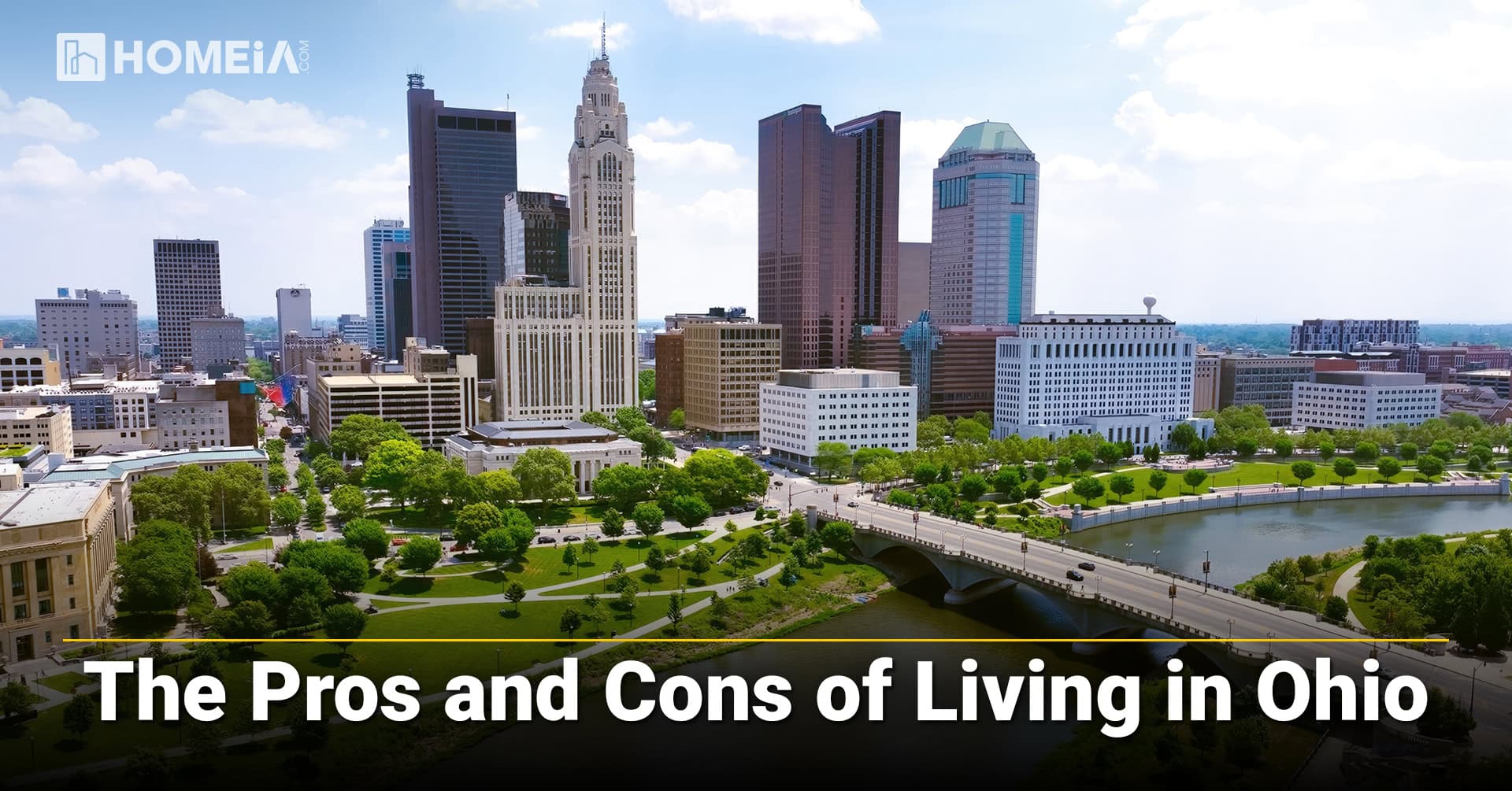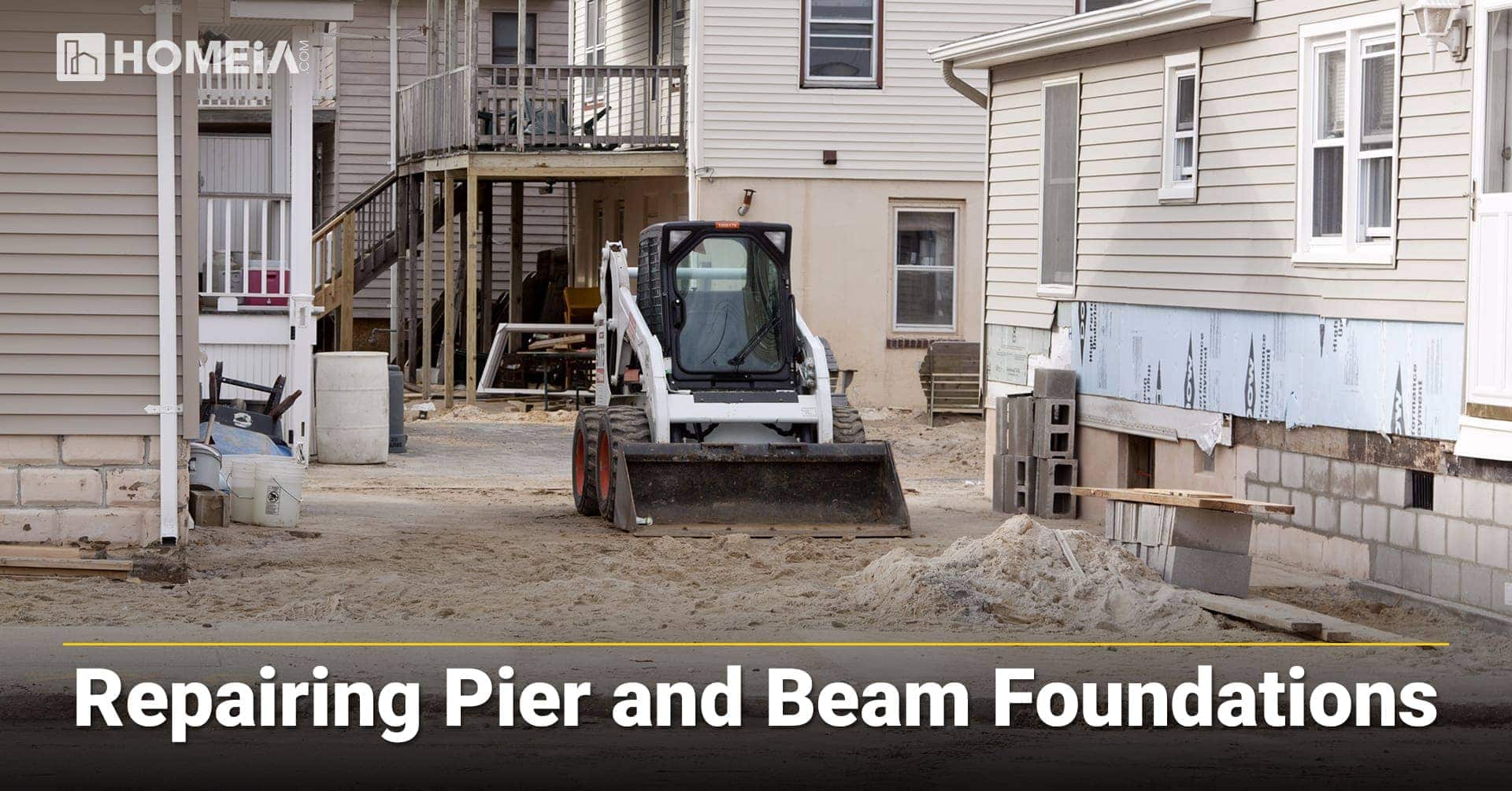Living in Ohio
Local Editor(s)
Table of Contents:
- The Complete Guide to Cost of Living and Lifestyle
- 1. Ohio Housing Costs: Outstanding Midwest Value
- 2. Ohio Tax Structure: Balanced and Business-Friendly
- 3. Daily Living Expenses in Ohio
- 4. Family Life in Ohio: Educational Excellence and Community Support
- 5. Ohio Transportation: Efficient Infrastructure and Growing Options
- 6. Ohio Job Market and Income Potential
- 7. Cost of Living Comparison: Ohio vs Other Midwest States
- 8. Ohio Lifestyle: Four-Season Living with Midwest Hospitality
- 9. Best Places to Live in Ohio for Different Needs
- Conclusion: Making Ohio Living Work for You
- Frequently Asked Questions About Living in Ohio
The Complete Guide to Cost of Living and Lifestyle
Ohio living combines affordability, career opportunity, and Midwest charm that makes it a top contender for anyone considering relocation. Known for its low cost of living, robust job sectors, and varied landscapes from Lake Erie shores to rolling farmland, Ohio appeals to families, professionals, and retirees seeking value without sacrificing quality of life. This extensive Ohio cost of living guide breaks down housing, taxes, expenses, schools, transportation, job markets, and lifestyle options to help you evaluate whether the Buckeye State is your ideal home.
1. Ohio Housing Costs: Outstanding Midwest Value

Compared to coastal states, Ohio offers more housing value for your investment dollar. Ohio real estate prices and rental rates rank among the nation’s lowest while still offering quality neighborhoods, modern amenities, and strong community infrastructure.
A. Major Ohio Cities Housing Costs
| City | Median Home Price | 2-Bedroom Rent | 3-Bedroom Rent | HOA Fees |
| Columbus | $275,000 | $1,350/month | $1,750/month | $50-$200/month |
| Cleveland | $190,000 | $1,100/month | $1,500/month | $50-$150/month |
| Cincinnati | $240,000 | $1,200/month | $1,600/month | $75-$200/month |
| Toledo | $160,000 | $950/month | $1,300/month | $50-$120/month |
| Akron | $170,000 | $950/month | $1,350/month | $40-$100/month |
Demand in urban areas like Columbus has surged due to job growth and cultural vibrancy, yet prices remain remarkably low compared to other growing metropolitan areas. Rural and suburban parts of Ohio offer buyers larger properties, lower HOA fees, and peaceful communities with excellent schools and amenities.
B. Ohio Housing Incentives and Financial Strategies
Ohio provides comprehensive down payment assistance through programs like OHFA’s Your Choice! down payment grant, helping first-time buyers overcome the initial hurdle of homeownership. Many cities offer additional homebuyer incentives including closing cost assistance and favorable loan terms for qualified residents.
FHA, USDA, and VA loans receive widespread support from Ohio lenders, making homeownership accessible for veterans, rural buyers, and those with modest down payments. The state’s affordable property tax rates further reduce total ownership expenses, providing homeowners manageable costs over the long term.
Suburbs around Columbus and Cincinnati, including Dublin, Mason, and Westerville, are especially favored for their newer developments, top-rated school districts, and family-friendly amenities. Cleveland suburbs like Lakewood and Rocky River offer walk -friendly environment, Lake Erie access, and proximity to job centers while maintaining affordable pricing.
Many Ohio communities actively invest in neighborhood revitalization programs, enhancing property values over time while preserving historic character and community identity.
2. Ohio Tax Structure: Balanced and Business-Friendly
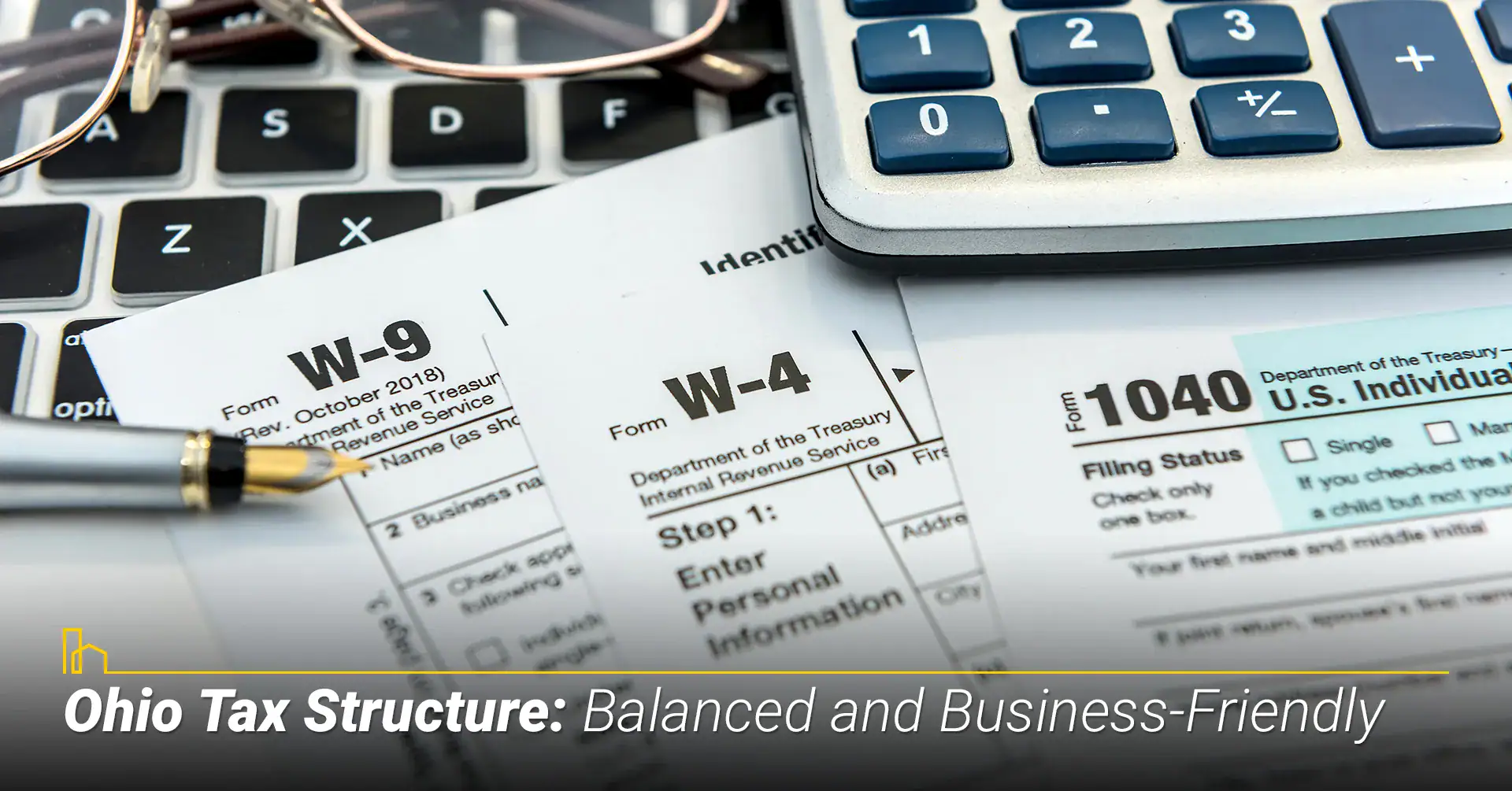
Ohio maintains a competitive tax structure that balances necessary revenue generation with taxpayer affordability, making it attractive for residents across all income levels.
A. Ohio State Tax Overview
| Tax Type | Ohio Rate | Key Benefits |
| Income Tax | 0.5%-3.75% progressive | Competitive rates, multiple deductions |
| Sales Tax Avg. | 7.25% | No tax on groceries or prescriptions |
| Property Tax | ~1.52% of home value | Varies by county, homestead exemptions |
| Gas Tax | $0.38/gallon | Funds road maintenance and improvements |
| Retirement Income | Partially exempt | Social Security and military pensions tax-free |
Ohio’s progressive income tax system tops out at 3.75%, making it highly competitive nationally while funding essential state services. Most retirement income including Social Security, military pensions, and certain private pensions receives tax-exempt status, making Ohio particularly appealing to seniors planning their retirement.
Property taxes vary by county but tend to be higher in urban areas with extensive infrastructure and services. However, Ohio’s gas tax helps maintain excellent roads and highways, contributing to the state’s reliable transportation infrastructure that benefits all residents.
The state offers valuable credits and exemptions for qualifying taxpayers, including the Earned Income Tax Credit and child/dependent care credits that reduce tax burdens for working families. Ohio does not tax groceries or prescription drugs, providing residents with greater financial support in managing essential expenses.
B. Tax Comparison: Ohio vs Other Midwest States
| Tax Type | Ohio | Indiana | Michigan | Pennsylvania |
| Income Tax | 0.5-3.75% | 3.15% | 4.25% | 3.07% |
| Sales Tax (avg) | 7.25% | 7.0% | 6.0% | 6.0% |
| Property Tax | ~1.52% | ~0.85% | ~1.54% | ~1.49% |
| Median Home Price | $230,000 | $229,000 | $235,000 | $259,000 |
3. Daily Living Expenses in Ohio
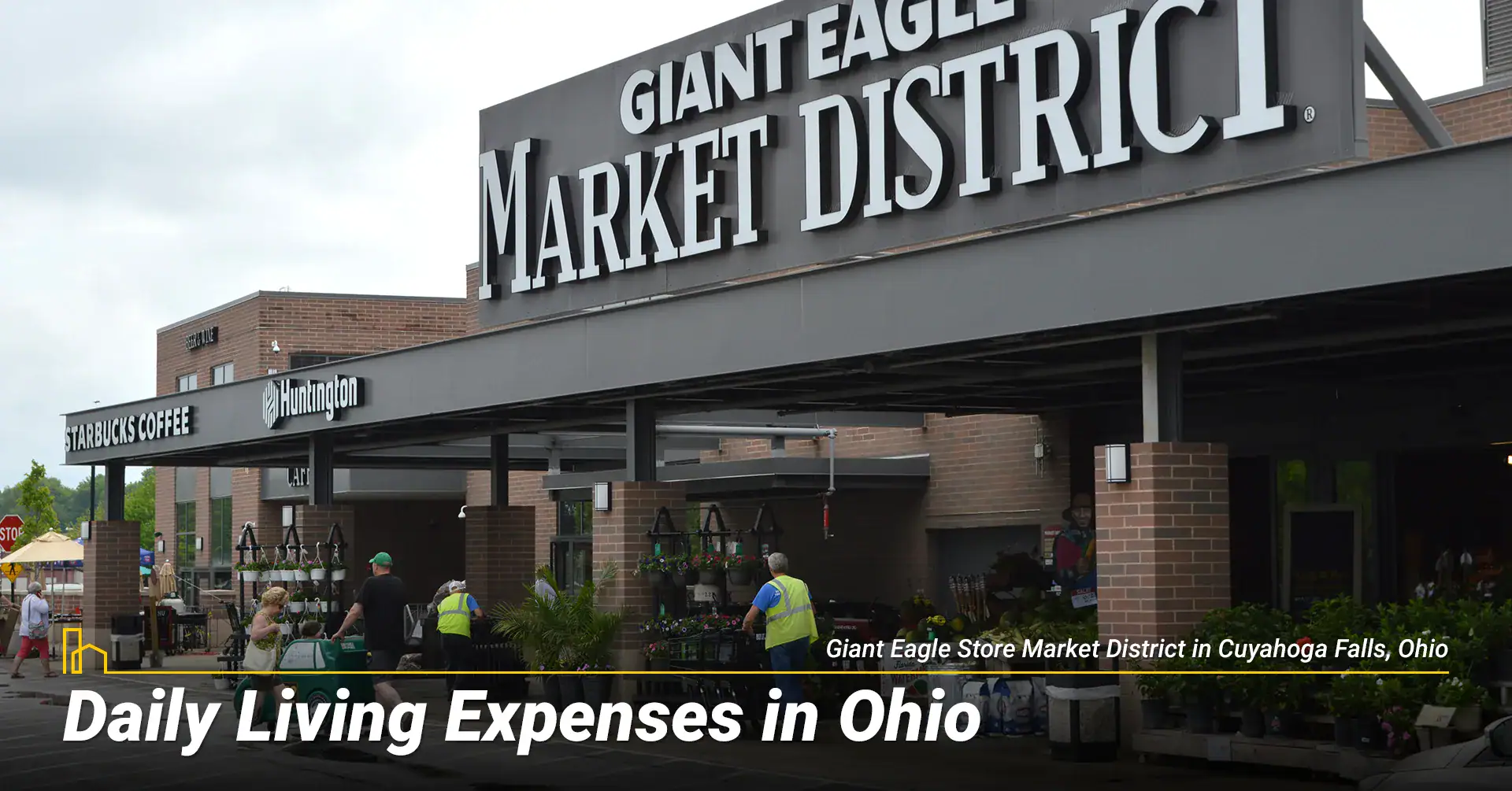
Ohio consistently ranks as one of America’s most affordable states for daily living expenses, which helps residents maintain comfortable lifestyles while building savings for future goals.
A. Monthly Living Costs Breakdown
| Expense Category | Ohio Cost | National Comparison | Money-Saving Opportunities |
| Groceries (per person) | $275-$400/month | Below national average | Aldi, farmers markets, bulk buying |
| Utilities | $160-$220/month | On par with national average | Budget billing, energy rebates |
| Gasoline | ~$3.45/gallon | Slightly lower than average | Competitive gas station pricing |
| Healthcare (individual) | $350-$500/month | Below national average | Community clinics, state programs |
| Dining Out | $10-$18/meal | Lower than national average | Local restaurants, happy hours |
B. Ohio Cost-Saving Strategies
Ohio ranks among the most affordable states for groceries, with residents benefiting from competitive supermarket chains, abundant farmers markets, and grocery options like Aldi and Kroger that offer significant savings on everyday essentials. Local farmers markets provide fresh, seasonal produce often at prices below traditional grocery stores.
Electric and natural gas utility providers frequently offer budget billing programs that distribute seasonal costs evenly throughout the year, plus seasonal rebates that reward energy conservation. Water and sewer rates remain affordable compared to larger metropolitan regions. Most cities also support comprehensive recycling and green initiatives that help manage utility costs.
Healthcare costs in Ohio typically run below national averages, with residents accessing care through community health clinics, state-supported hospitals, and competitive insurance markets that keep premiums manageable.
4. Family Life in Ohio: Educational Excellence and Community Support
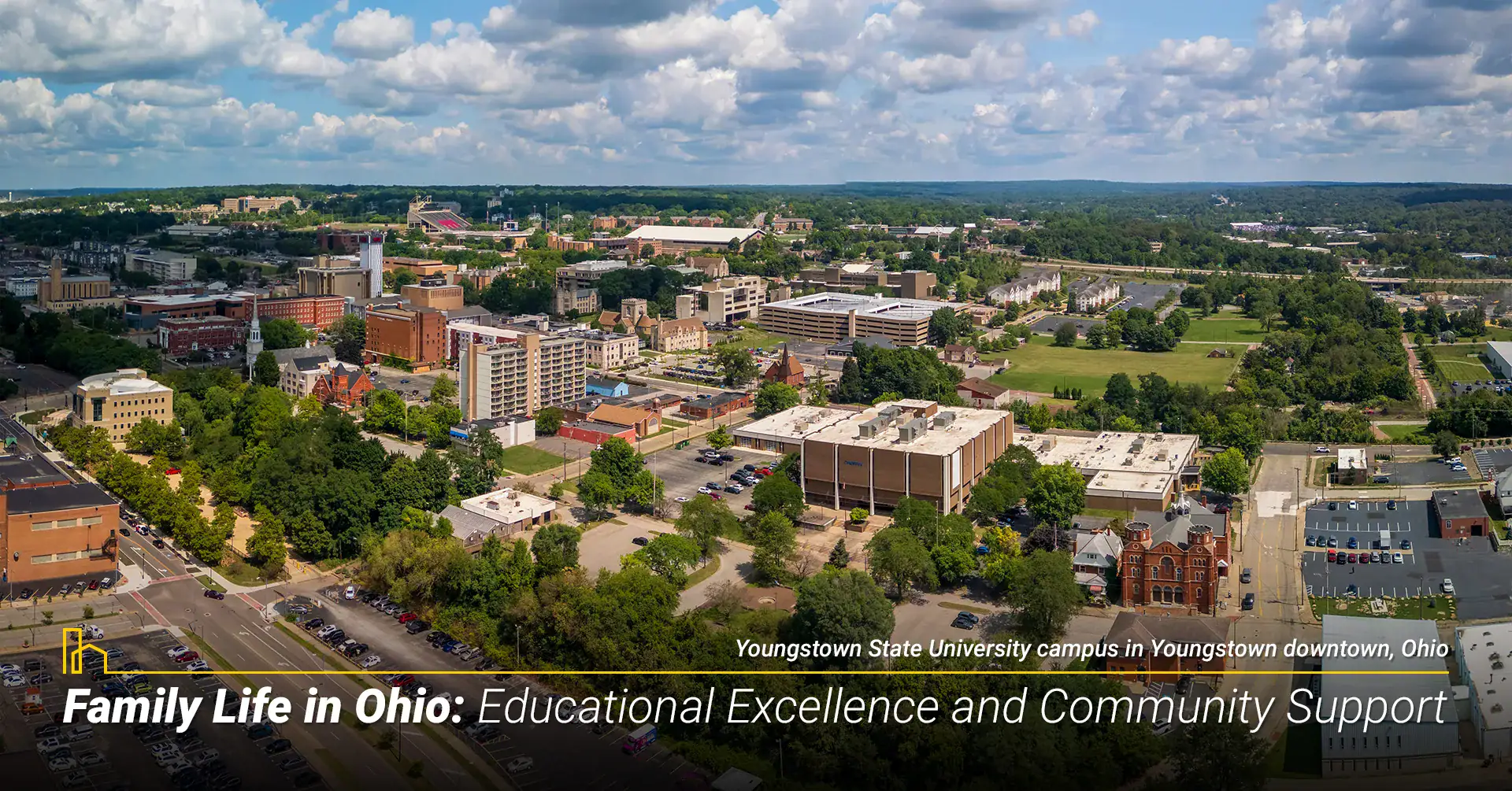
Ohio features numerous award-winning school districts and robust support for public charter schools, STEM-focused institutions, and innovative educational programs that prepare students for future success.
A. Education Excellence in Ohio
Top-performing school districts including Solon, Upper Arlington, and Indian Hill consistently rank among the nation’s best, offering comprehensive curricula, advanced placement programs, and varied extracurricular activities. Education remains a state priority, with the Ohio Department of Education investing heavily in digital learning initiatives, early childhood education, and teacher development programs.
Ohio’s higher education system includes world-renowned institutions like The Ohio State University, Case Western Reserve University, Miami University, and Oberlin College, providing in-state students with access to excellent educational opportunities at affordable tuition rates.
B. Family Living Expenses and Community Resources
| Family Expense | Ohio Cost | Available Support | Community Benefits |
| Childcare (full-time) | $800-$1,100/month | State subsidies, employer programs | Quality daycare centers |
| Summer Camps | $120-$250/week | YMCA, recreation departments | Educational and sports camps |
| Youth Sports | $100-$400/season | Community leagues, school teams | Character development programs |
| After-School Care | $150-$350/month | School-based programs, nonprofits | Homework help, enrichment |
Ohio’s wide variety of community amenities makes it easy for families to stay active and engaged year-round. Public libraries, YMCA branches, recreation centers, and nonprofit organizations provide low-cost enrichment programs for children and families. Museums in cities like Cincinnati and Cleveland offer free or reduced admission days, while state parks provide year-round outdoor recreation opportunities.
Safety represents a significant advantage for Ohio families, with many suburbs consistently ranking high in national safety indexes. Neighborhood watch programs and community policing initiatives foster trust and security in communities throughout the state.
5. Ohio Transportation: Efficient Infrastructure and Growing Options
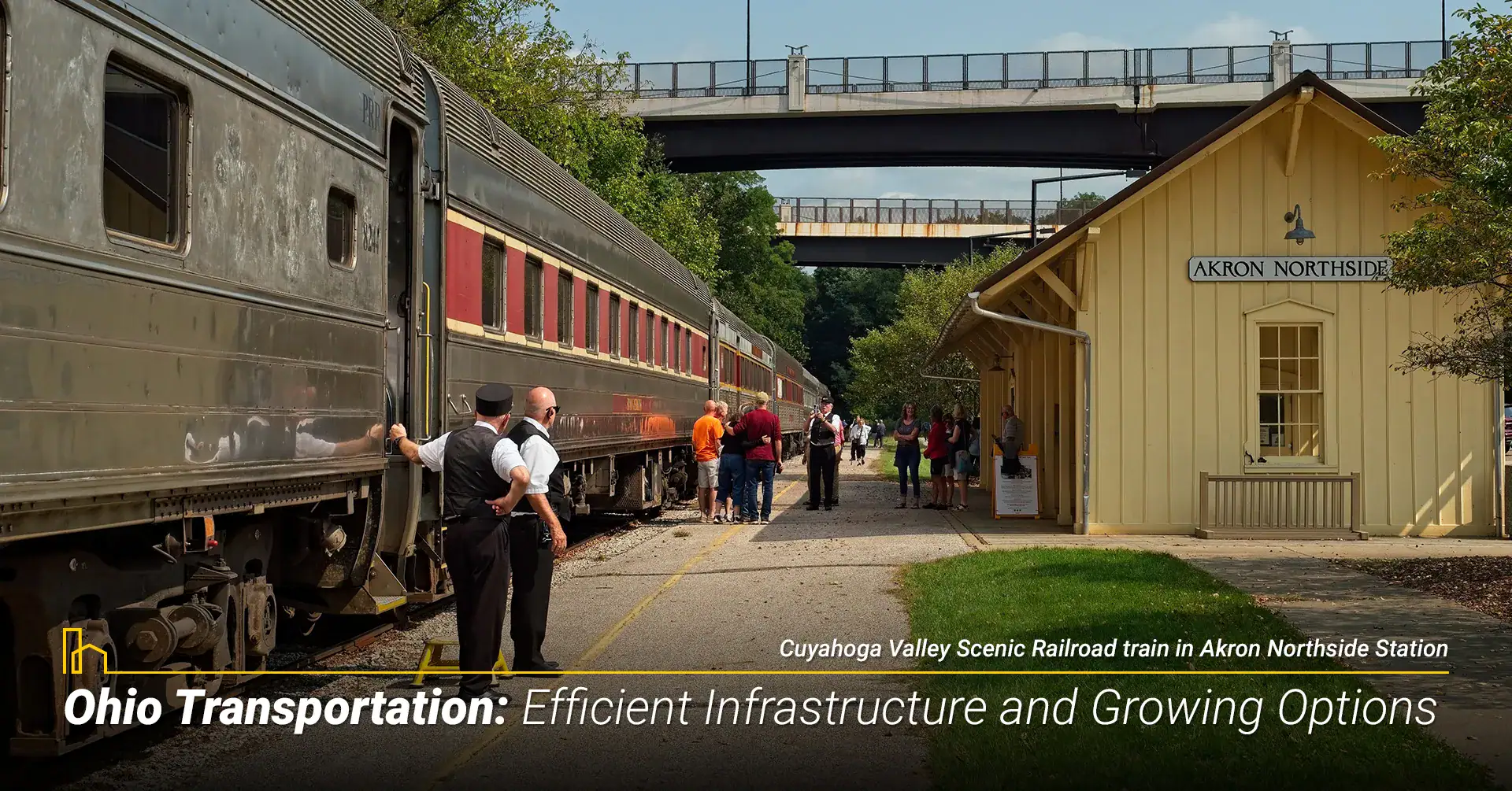
Ohio maintains excellent transportation infrastructure with well-maintained highways, expanding public transit systems, and growing alternative transportation options in urban areas.
A. Vehicle-Related Expenses in Ohio
| Transportation Cost | Ohio Average | National Comparison | Additional Benefits |
| Auto Insurance | ~$1,200/year | Below national average | Competitive insurance market |
| Gasoline | ~$3.45/gallon | Slightly below average | Multiple refinery access |
| Vehicle Registration | ~$75-$125/year | Very affordable | Simple renewal process |
| Maintenance | Standard rates | Competitive pricing | Many service options |
Commuting remains manageable throughout Ohio, with average travel times around 22-26 minutes even in major metropolitan areas. Most Ohioans drive, but walkable city cores are expanding in places like Columbus and Cleveland, supported by smart traffic systems and infrastructure improvements.
B. Public Transit and Alternative Transportation
| City | Transit System | Monthly Pass | Daily Fare | Coverage Area |
| Columbus | COTA | $62 | $2.00 | Central Ohio Regional Transit |
| Cleveland | RTA | $95 | $2.50 | Greater Cleveland area |
| Cincinnati | Metro, TANK | $70-$80 | $2.00 | Tri-state region |
Ohio continues expanding bike-share programs, particularly in downtown areas, while building extensive multi-use trails that support walking, running, and cycling for recreation and transportation. Transit infrastructure upgrades are underway in several cities to enhance reliability, accessibility, and route coverage.
6. Ohio Job Market and Income Potential
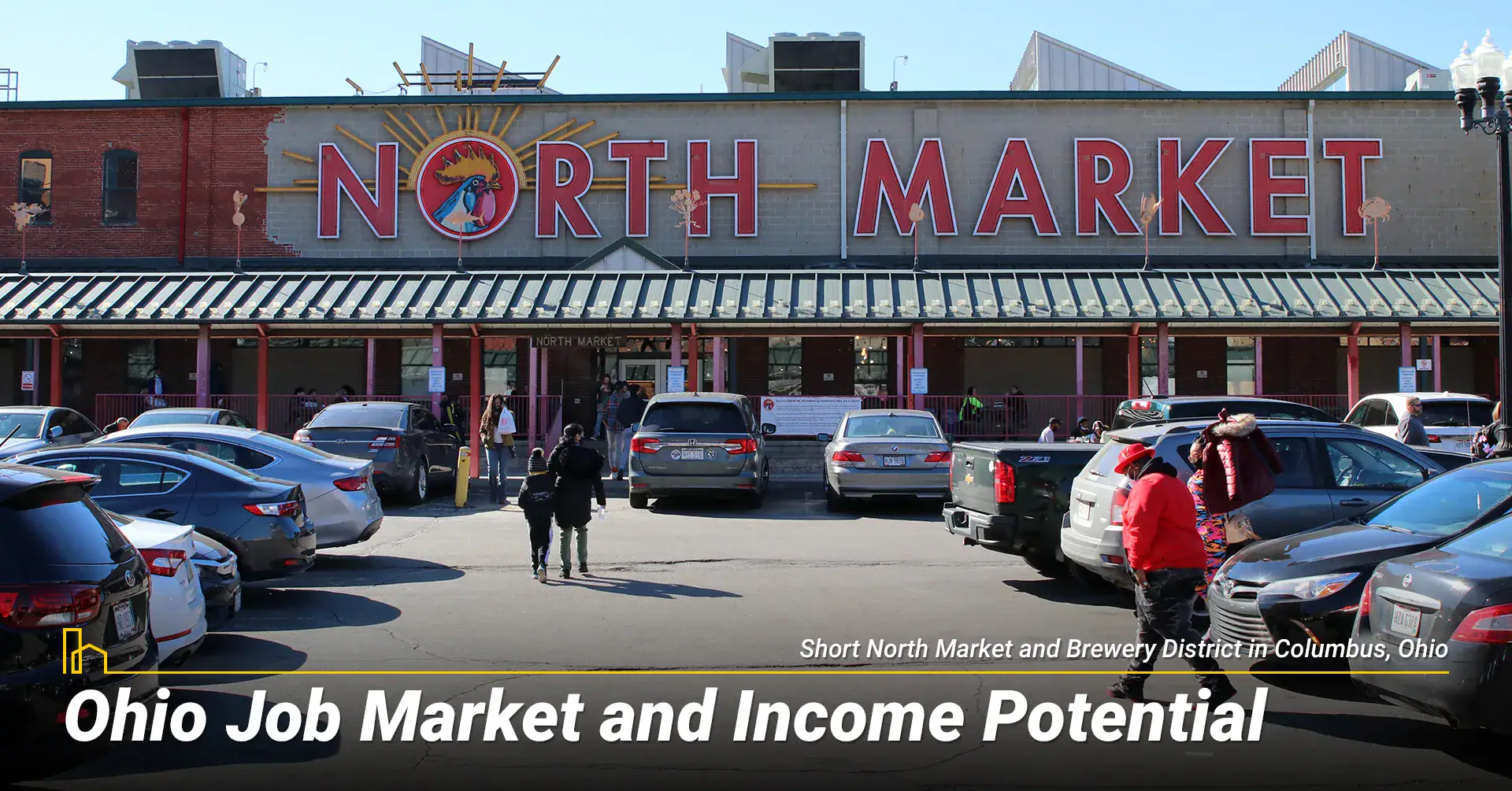
Ohio’s job market demonstrates stability and diversification, with traditional manufacturing sectors enhanced by growing technology, healthcare, and logistics industries.
A. Income Statistics and Employment Trends
| Employment Metric | Ohio | National Average | Growth Sectors |
| Minimum Wage | $10.45/hr (indexed) | $7.25/hour federal | Healthcare, tech, logistics |
| Median Household Income | ~$65,000/year | $70,000/year | Manufacturing, financial services |
| Unemployment Rate | Below national average | Varies by region | Research and development |
| Job Growth | Steady expansion | Varies by state | Green energy, data centers |
B. Major Ohio Employers and Industries
| Industry | Key Companies | Typical Salary Range | Growth Outlook |
| Healthcare | Cleveland Clinic, OhioHealth | $45,000-$150,000 | High demand by aging population |
| Manufacturing | Honda, General Motors, Procter & Gamble | $40,000-$95,000 | Modernizing with automation |
| Technology | Intel, Amazon (data centers) | $60,000-$130,000 | Rapidly expanding |
| Financial Services | Nationwide, Huntington Bank | $45,000-$110,000 | Stable with fintech growth |
| Logistics | DHL, FedEx | $35,000-$80,000 | E-commerce driven expansion |
The Columbus region rapidly emerges as a significant tech hub, attracting startups, data centers, and technology companies seeking affordable operations with access to skilled workforces. Cleveland’s medical sector remains one of the strongest in the country, while Cincinnati supports thriving marketing, financial services, and consumer goods industries.
More businesses continue relocating or expanding to Ohio due to low operational overhead, central geographic location, and business-friendly policies. Apprenticeship and trade programs are expanding to fill workforce gaps in skilled manufacturing, construction, and technical services.
7. Cost of Living Comparison: Ohio vs Other Midwest States
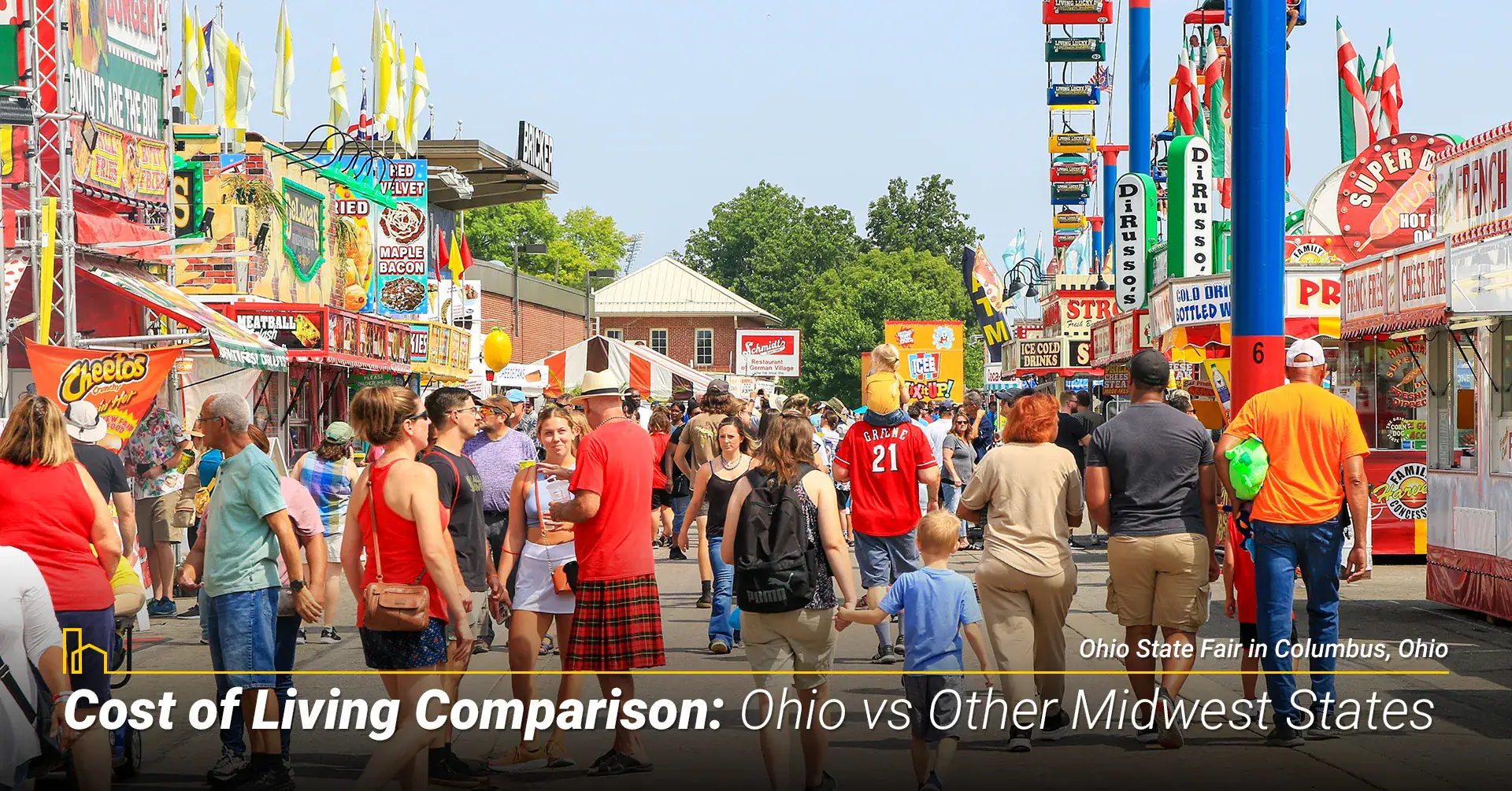
Ohio offers exceptional value among Midwest states, combining affordability with quality of life advantages that appeal to diverse demographics.
| Category | Ohio | Indiana | Michigan | Pennsylvania |
| Median Home Price | $230,000 | $229,000 | $235,000 | $259,000 |
| Income Tax | 0.5-3.75% | 3.15% | 4.25% | 3.07% |
| Sales Tax (avg) | 7.25% | 7.0% | 6.0% | 6.0% |
| Property Tax | ~1.52% | ~0.85% | ~1.54% | ~1.49% |
| Commute Time | 22-26 minutes | 23-27 minutes | 24-28 minutes | 25-30 minutes |
Ohio offers competitive housing prices with Indiana while providing more urban amenities and job diversity. Compared to Michigan and Pennsylvania, Ohio maintains lower income taxes and competitive overall living costs, making it attractive for both renters and homeowners seeking Midwest value.
8. Ohio Lifestyle: Four-Season Living with Midwest Hospitality
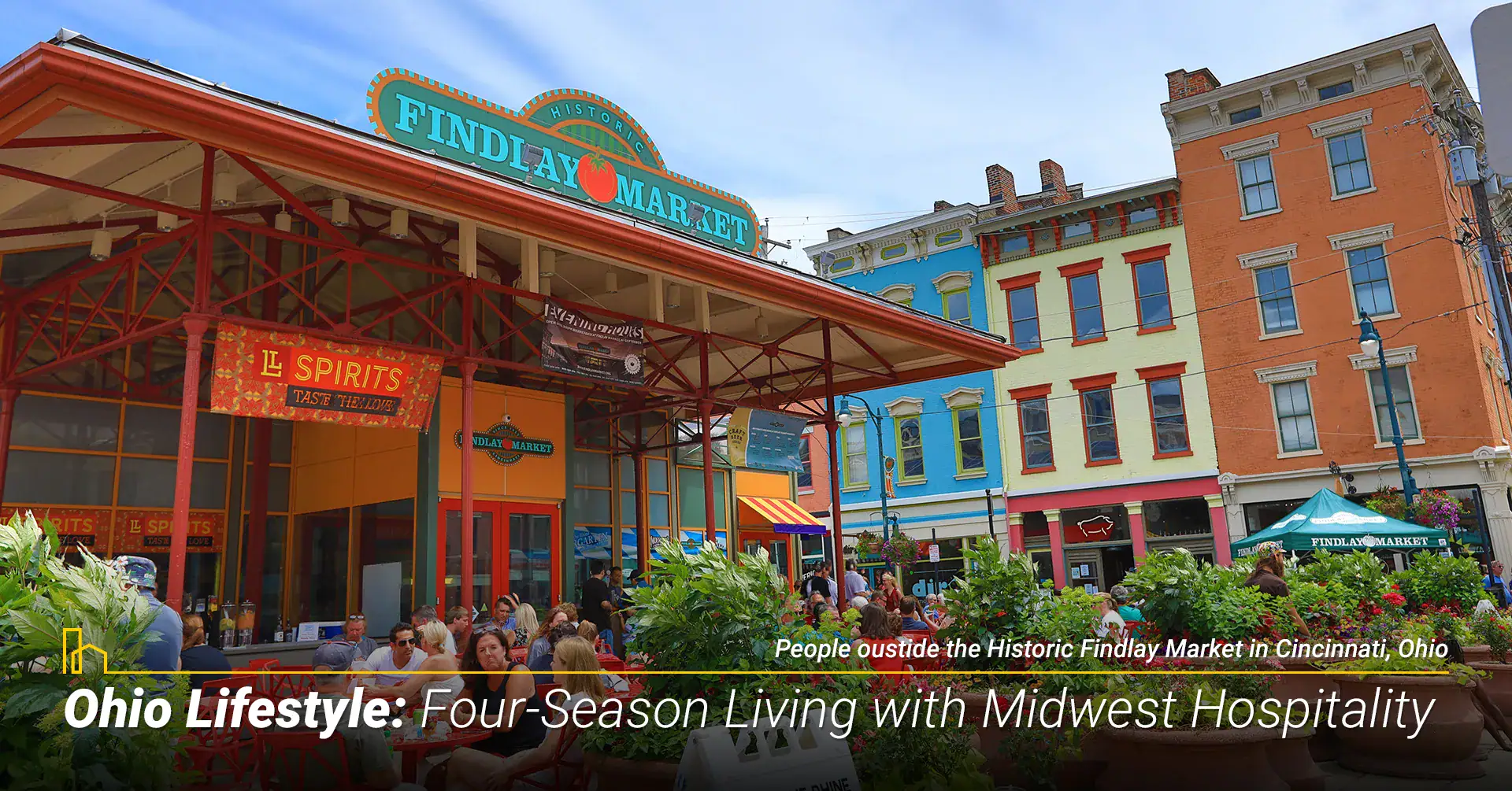
Ohio’s climate features four distinct seasons with colorful autumns, snowy winters, lush springs, and warm summers, creating ideal conditions for seasonal recreation, festivals, and outdoor activities that enrich community life.
A. Seasonal Recreation and Cultural Attractions
Residents enjoy diverse seasonal activities including fall festivals, winter ice skating, spring hiking, and summer boating or baseball games. The weather variety supports hobbies like gardening, snow sports, nature photography, and year-round outdoor exploration.
Urban areas like Columbus and Cleveland host thriving food scenes, professional sports franchises, world-class museums, and major concert venues. Columbus is recognized for its growing arts district and craft beer scene, while Cleveland’s historic architecture, Rock & Roll Hall of Fame, and Lake Erie access attract tourists and residents alike.
B. Small Town Charm and Natural Beauty
Smaller Ohio towns offer authentic community festivals, historic charm, and affordable living with easy access to metropolitan amenities. Lake Erie shores provide beach recreation, while Hocking Hills offers hiking, camping, and scenic beauty for weekend getaways and outdoor adventures.
Ohio’s cultural institutions, including the Cincinnati Art Museum, Franklin Park Conservatory, and numerous historic sites, enrich lifestyle options available to residents throughout the state.
9. Best Places to Live in Ohio for Different Needs

Ohio’s diverse communities cater to various lifestyles, budgets, and priorities, making it possible for most people to find their ideal home environment.
A. Family-Friendly Ohio Communities
| Community Type | Best Cities | Median Home Price | Key Benefits |
| Suburban Families | Dublin, Solon, Beavercreek | $275,000-$350,000 | Excellent schools, low crime |
| Affordable Families | Toledo, Elyria, Mansfield | $160,000-$200,000 | Budget-friendly, good value |
| Professional Families | Westerville, Mason, Rocky River | $240,000-$320,000 | Commuter access, amenities |
B. Professional and Retiree Options
Young professionals increasingly choose Columbus, Cleveland, and Cincinnati for career opportunities, nightlife, cultural attractions, and urban walkability. These cities offer vibrant downtown areas, diverse dining options, and growing job markets across multiple industries.
Retirees often prefer communities like Hilliard, Mentor, and Westerville for accessible healthcare, community centers, senior services, and quiet neighborhoods with reasonable living costs and social opportunities.
Nature lovers find paradise in Athens, Yellow Springs, and Granville, where outdoor access combines with artsy communities, local festivals, and small-town charm while maintaining proximity to larger cities.
Conclusion: Making Ohio Living Work for You
Ohio stands out as a prime destination for those seeking a diverse, affordable lifestyle without sacrificing access to urban amenities, outdoor experiences, or professional opportunities. With median housing costs significantly below national averages and favorable state taxes, Ohio maximizes your budget while offering diverse cultural, recreational, and economic opportunities.
Families benefit from quality public education, suburban safety, and extensive park systems, while retirees appreciate manageable living costs, excellent healthcare access, and four-season climate variety. Young professionals increasingly choose Ohio’s revitalized metropolitan areas for career growth, entertainment options, and outstanding affordability.
Whether you’re drawn to bustling Columbus, historic Cleveland, welcoming Cincinnati, or charming small-town Ohio, the Buckeye State offers compelling reasons to call it home.
Frequently Asked Questions About Living in Ohio
1. Is Ohio a good state for retirement living?
Yes, Ohio offers excellent retirement value with affordable living costs, comprehensive healthcare systems, and favorable tax treatment of retirement income including Social Security and military pensions. Many communities provide senior-focused amenities and services.
2. How stable is Ohio’s housing market for buyers?
Ohio’s housing market remains stable with reasonable prices, steady demand, and consistent appreciation, especially in suburban areas. The market offers good value without the volatility seen in coastal markets.
3. Are Ohio winters difficult to manage?
Ohio winters bring snow and cold temperatures, but homes are built to handle winter weather, heating systems are efficient, and snow removal services are reliable. Many residents enjoy winter sports and seasonal activities.
4. What job opportunities are growing in Ohio?
Healthcare, technology, logistics, manufacturing, and financial services show strong growth. Columbus particularly attracts tech companies, while Cleveland leads in medical innovation and Cincinnati thrives in corporate services.
5. How much income is needed to live comfortably in Ohio?
Singles typically need around $50,000 annually for comfortable living, while families generally require $70,000-$90,000 depending on location and lifestyle preferences. Housing affordability makes higher living standards achievable.
6. Is public transportation reliable in Ohio cities?
Major cities offer reliable public transit systems with regular schedules and expanding coverage. However, smaller towns and rural areas depend primarily on personal vehicles for transportation needs.
7. How does Ohio compare to neighboring states for overall costs?
Ohio offers competitive housing prices with Indiana while providing more urban amenities. Compared to Michigan and Pennsylvania, Ohio maintains lower income taxes and similar overall living costs with better job market diversity.
8. Are there quality higher education options in Ohio?
Yes, Ohio hosts excellent universities including The Ohio State University, Case Western Reserve, Miami University, and many others offering top-tier programs at reasonable in-state tuition rates for residents.
9. Is Ohio family-friendly with good schools and safety?
Absolutely. Ohio features numerous award-winning school districts, safe suburban neighborhoods, extensive park systems, and family-oriented community programs that make it ideal for raising children.
10. Do remote workers find Ohio attractive for relocation?
Yes, and its only growing, thanks to reliable fiber internet networks, affordable housing that allows for home offices, low living costs that maximize remote work salaries, and quality of life benefits that enhance work-life balance.
Local Editor(s)
5 Best Places to Live in Ohio for Young Adults
For many years, the hot spots for young people in the United States were found in the biggest cities and states, with New York and California attracting those recent college…
3 Most Affordable and Safe Neighborhoods to Live in Ohio
Research identifies Ada, Seven Hills, and Minerva as standout neighborhoods in Ohio for their exceptional affordability and safety. These communities offer median home prices of $230,000, $180,000, and $160,000 respectively,…
3 Best Neighborhoods to Live in Columbus, Ohio
Columbus, Ohio, is a thriving, affordable city with a strong economy and high quality of life. With a population of 913,175, Columbus offers a variety of safe neighborhoods, making it…
3 Great Reasons and 6 Stunning Places to Raise Kids in Ohio
“Why oh, why-o, did I ever leave Ohio?” crooned Jane Lynch and Carol Burnett in the hit T.V. show, Glee, based in Lima. It’s a great question. For parents looking…
27 Best Things to do in Canton, Ohio for Families
Canton, Ohio, a city of 70,000 located about 60 miles south of Cleveland, is often overlooked among the rest of the more significant Ohio locations. As the seat of Stark…
23 Family-Friendly Things to do in Akron, Ohio
As a state that borders the Great Lakes, Ohio is one of the primary epicenters of the United States. Owing to its central location–with northeast states like Pennsylvania to the…
20 Affordable Free Things to do in Port Clinton, Ohio
In the northern part of Ohio, where the mouth of the Portage River meets the beautiful shores of Lake Erie, lies the city of Port Clinton. A relatively small city,…
10 Most Affordable Places to Live in Ohio
Ohio is commonly referred to as “the heart of it all,” and for good reason. The state of Ohio sits centrally on the eastern side of the United States, and…
Selling your Deceased Parents’ Home? Best Approach to Maintain Good Sibling Relationships
Selling your own house is hard enough, let alone trying to sell your parents’ home after their death. You miss your parents and are grieving. Now, you and your siblings are responsible for selling their personal property. Trying to find…
Top 10 Benefits of Resurfacing Your Old Fiberglass Pool
If you have a pool, fiberglass pool resurfacing can be a great option for keeping it in excellent shape for many years to come. A concrete pool will stand up to about 10 to 15 years of use before it…
An Ultimate Guide to Moving for Home Buyers and Sellers
The real estate is a booming industry which makes it easy for anyone to earn and mold their professional careers. With perseverance and patience, a career in real estate will allow you to meet new people, enhance your customer service…
8 Luxurious Additions That Add Value to Your Home
Owning a home can be a great financial investment, particularly in areas where property values are expected to rise quickly. In a good market, you can resell your home for well over what you paid. Besides market dynamics, your home’s…
How to Remove Slime from Carpet
Let’s cut right to the chase, because you’re probably in the middle of a minor crisis. To remove slime from carpet, pull up as much as you can using the slime itself, use an ice cube to solidify what’s left,…

 Considering
Considering



